Stratham Hill Park
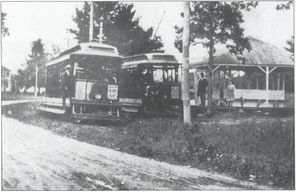
A trolley stops at the Stratham Hill Park.
Stratham Hill. Just a hill? Perhaps, but many things have happened on and around it to give it its name. It is one of the highest points in this relatively flat region. From the top you can see many of the Presidential Mountains and other distinct places. It is located in the middle of the four major towns that were set up in this area in the 1600s: Portsmouth, Dover, Exeter, and Hampton.
It was most likely first discovered when Martin Pring arrived in America about 1603. He sailed his ship into what is now known as Great Bay and was astounded by the beauty of what he had discovered. But he may not have been the first one to see it. Norse Vikings may have been in the area some six hundred years before the first white man ever arrived. They had built their tribal camps in and around the Piscataqua River Valley long before the Vikings had entered Great Bay. These people were known as the Squamscott Indians. They lived and prospered here for over a thousand years without ever knowing that white man even existed. But shortly after we arrived, they were murdered and driven from their homeland, forced to become what we wanted them to become. They did not understand the concept of money, or "owning" land. They believed that it was everyone's right to live on the land, and that the land owned them. It gave them food, shelter, and the ability to survive, this was a gigantic insult to their culture, and Mother Earth.
Stratham Hill, at one time, may have been used in some of the earlier wars as a "beacon hill." This was where the beacon fires would be lit to inform friendly troops when to attach or where the enemy was. But it is mostly thought of as a peaceful and beautiful landmark. Its history is surrounded by events such as anniversaries and celebrations of patriotic achievement. The seventy acres of land surrounding the hill, known as Stratham Hill Park, was donated to our town by Edward Tuck of Paris, France. He bought the land and donated it to us in memory of his well-known father, the Honorable Amos Tuck, a long-time citizen of Exeter who was known and honored throughout the state and our great nation.
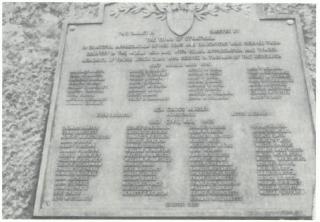 The War Memorial on the rock in front of the park was dedicated on October 12, 1920. A plate made of bronze was placed on this rock in memory of the 62 men who served our country in the Civil War, and the 33 men and 3 women who served the world in World War I.
The War Memorial on the rock in front of the park was dedicated on October 12, 1920. A plate made of bronze was placed on this rock in memory of the 62 men who served our country in the Civil War, and the 33 men and 3 women who served the world in World War I.
Another noticeable monument on the hill is the table at the top. This table was designed and built by a Mr. Lester W. Lane of Stratham. The table gives the relative compass headings and points in the direction of various places of interest along with the mileage to locations such as Mount Monadnock, Exeter River, Brentwood, Gunstock, and Mount Washington. Also, about halfway up the front side of the hill is another, smaller boulder with a bronze plaque, with an inscription that reads: "Robert T. Lincoln, a student at Phillips Exeter Academy, son of Abraham Lincoln, read the Declaration of Independence on this rock on July 4, 1860.
Stratham Hill is only about 288 feet tall, but was an ideal location for the placement of a fire tower in 1931. It has burned down twice since it was erected, and now on the spot of the original stands a tower made of steel so as to prevent it from ever burning down again.
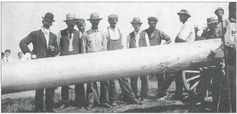 In 1908, in preparation for the Old Home Day celebration, a new flag pole was needed to be constructed. The company making the flag pole got the necessary permission from the town and took two trees - the first had a knot in it so it could not be used but the second was fine. These two trees were taken from the area around the hill and after the flag pole was completed, it was placed at the base of the hill. The people creating the flag pole were pushed for time because they only had a week's notice but they managed to finish it through long hours of hard work. A few months later, Prentiss Wiggin suffered what seemed to be a severe heart attack, and dies at the base of the hill. The funeral was held a week later at a nearby church.
In 1908, in preparation for the Old Home Day celebration, a new flag pole was needed to be constructed. The company making the flag pole got the necessary permission from the town and took two trees - the first had a knot in it so it could not be used but the second was fine. These two trees were taken from the area around the hill and after the flag pole was completed, it was placed at the base of the hill. The people creating the flag pole were pushed for time because they only had a week's notice but they managed to finish it through long hours of hard work. A few months later, Prentiss Wiggin suffered what seemed to be a severe heart attack, and dies at the base of the hill. The funeral was held a week later at a nearby church.
The Park has undergone a few changes since 1908. It now hosts two baseball fields, soccer fields and concession stands. In July, it also hosts the Stratham Fair. But unexpected things have occurred here recently. The fire tower on the top of the hill has burned twice, once in the 1980s and then again in 1997. The second time the tower was destroyed by arson. A new tower built in 1998 at a cost of $20,000.00 made completely out of metal was built on the same spot as the second tower. It is about the same height as the first two, and would look almost exactly the same if the top was an enclosed wooden box, instead of the metal cage it is now. The person responsible for the second fire has since been brought up on charges.
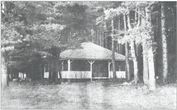 Another significant event was the micro burst in 1991. This miniature tornado tore off the tops of all of the trees on the northern face of the hill and destroyed one of the pavilions at the bottom, killing three people. Shortly after the storm, trees were planted on the side of the hill to prevent erosion, and reforest the hill. But the trees grow very slowly because of the poor, thin soil on the hill.
Another significant event was the micro burst in 1991. This miniature tornado tore off the tops of all of the trees on the northern face of the hill and destroyed one of the pavilions at the bottom, killing three people. Shortly after the storm, trees were planted on the side of the hill to prevent erosion, and reforest the hill. But the trees grow very slowly because of the poor, thin soil on the hill.
Caretaker of the park, Bill Jeralds, who put in countless hours keeping the park clean and the grass cut, retired in 2002.
Another change to Stratham Hill Park was the addition of the new Veteran's Memorial. It contains the names of people who fought in the Revolutionary War, World War II, Korean and Vietnam Wars. The monument cost the town $25,000 and was dedicated on November 11, 2001 in honor of Veteran's Day.
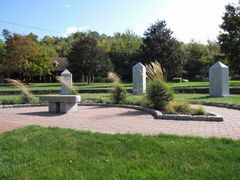
By Scott Prince, edited by Brian Levin
Stratham Hill is also mentioned on the "Lost Ski Areas" page as having a small ski area in the 1960s and 1970s.

